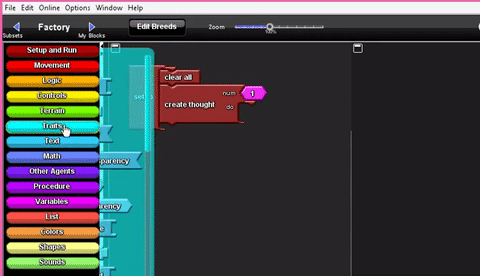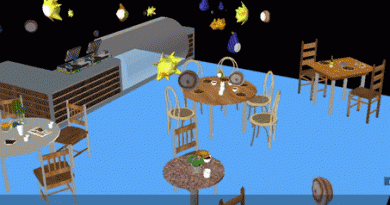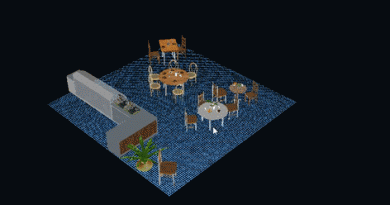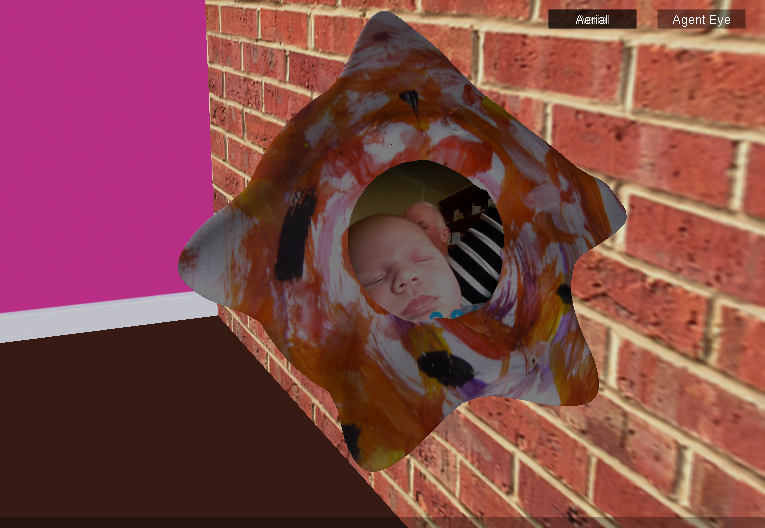01 Getting Started with StarLogo TNG
StarLogo TNG is the next generation of modelling and simulation software, it is also a great tool to develop and prototype games.
It uses the same block based visual programming language as Scratch. Users build computer programs by clicking together ‘Logo Blocks’ in a puzzle based interface design.
StarLogo is referred to as a low entry level – high ceiling programming environment, as although beginners find it very easy to use, it can also be used to create very sophisticated games and simulations.
Decentralised systems are systems in which the behaviour of many agents behaving in a simple way on a small scale local level, result in complex and unpredicatable behaviours emerging. The way that birds create beautiful flocking patterns without being coordinated by any leader birds is a good example of this. Each bird follows a simple set of behavioural rules.
1) Move towards the middle of the flock.
2) Move in the same direction as the birds around you.
3) Avoid colliding with other birds.
StarLogo TNG is particularly useful to program simulations of decentralised systems, which is useful for the Flunstellas project because inspired by decentralised models of mind from Artificial Intelligence, we want to create new ways of describing thinking, that suggest that our minds are more like ecosystems than machines.
You can download StarLogo TNG from MIT here.
If you would like a quick general introduction to StarLogo TNG try this quickstart guide.
If you would like a quickstart guide to navigating 3D space in StarLogo TNG try this guide.
As well as the guides on this website, the StarLogo TNG website has a great set of tutorials.
To find out more about how Mitchel Resnicks researched and developed of Starlogo to involve young people in the exploration of decentralised systems, read his book Termites, Turtles and Traffic Jams.





